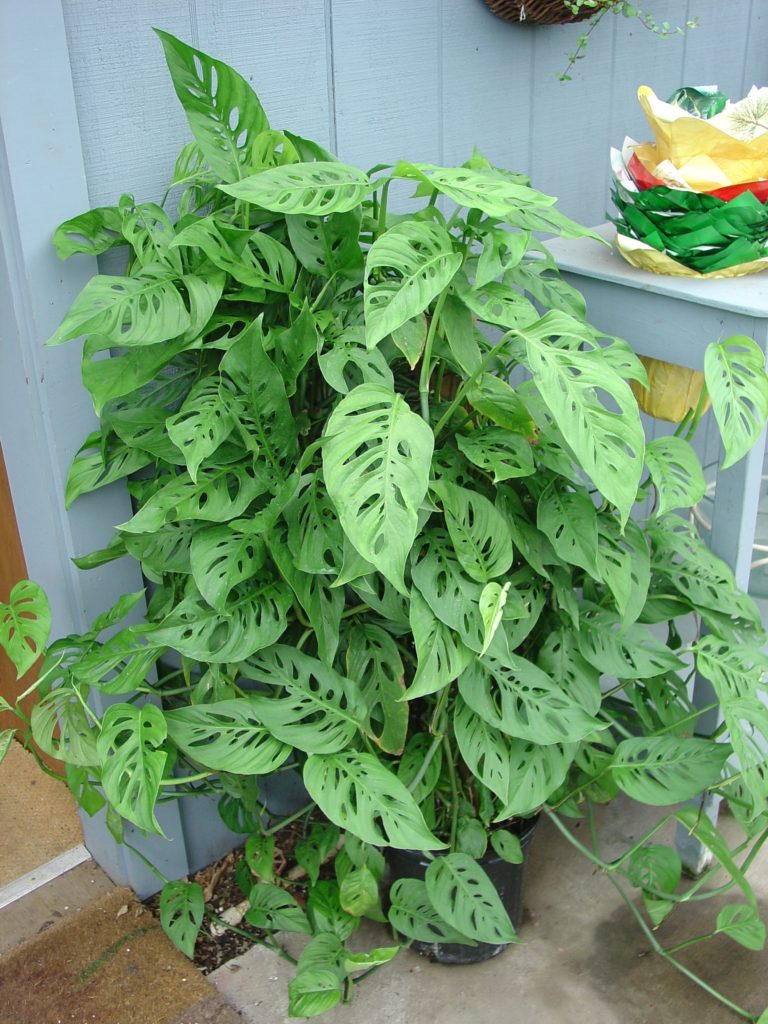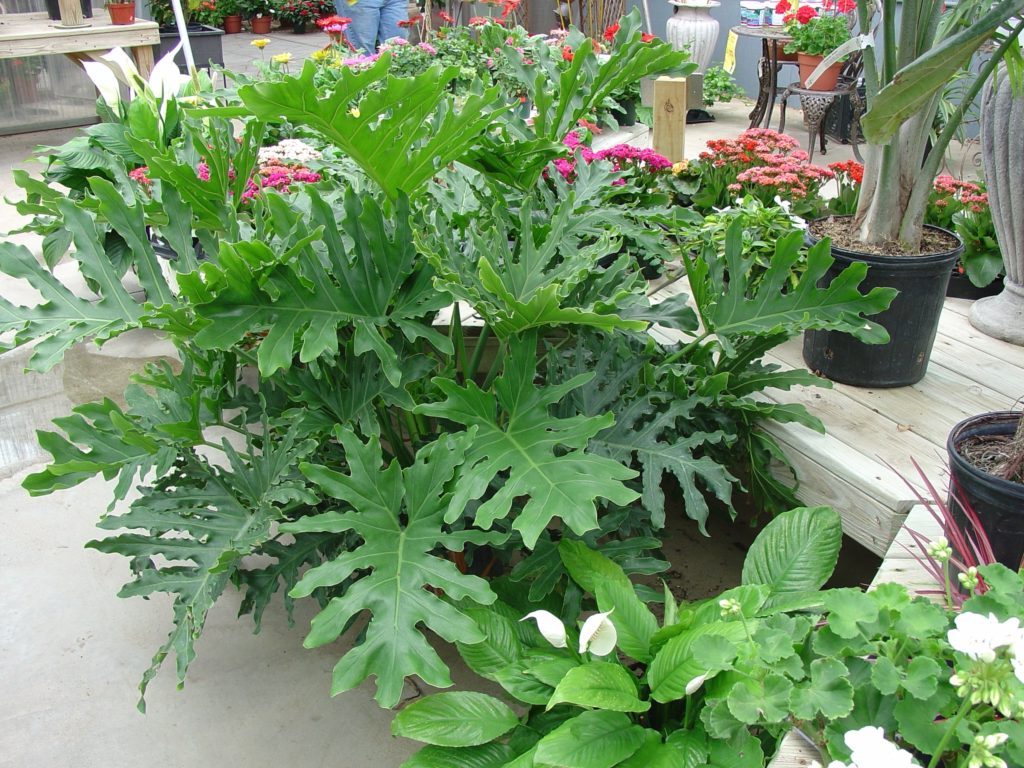
Monstera, aka Swiss Cheese Philodendron or Split-leaf philodendron (Monstera deliciosa) is a climbing evergreen member of the Arum family (Araceae) native to the tropics of Central America. It may also be grown outdoors in (USDA plant hardiness zones 10-12).
Monstera is grown for its large cutleaf foliage, sometimes perforated, that may grow up to 3 feet long. Some forms with perforated foliage earns it the name “Swiss cheese plant”. It survives in the warm 70°F dry air and low light environs of modern homes and is also a popular office and house plant. Monstera is a tropical vine, but can survive resting temps between 50 to 60 °F over the winter months.
Young gardeners, particularly millennials (born between 1981 to 1996) appear to be highly captivated about this huge house plant. Water pots every 7-10 days and more often if the plant is seriously potbound. Plants are usually grown in large pots and should be occasionally showered down in the tub to provide humidity and to rinse dust off the foliage. Set a leak-proof plastic mat under the plant so as not to damage room flooring and/or carpets.
Fertilize your plant once monthly from late winter (March) to fall (October) with any product labelled for house plants. Reduce watering and do not feed during the winter (November thru February). Remove dust with a damp sponge or paper towel.

Water regularly and allow the soil to dry out slightly between waterings. Reduce watering in fall and winter. Mist the leaves periodically to increase room humidity, particularly during the winter months in northern U.S. homes.
If you live in the deep South or in southern California (zones 10-12), outdoor plants may flower and produce edible fruits with a taste similar to pineapple. In warmer climes, monsteras will grow up attached to a yard tree, trellis or a pole made from bark.
Inspect foliage for common pests such as mealybugs, aphids, thrips, scale and spider mites. Most pests can be removed by directing a coarse spray of water to the leaves. Insecticidal soap will also help eliminate troublesome pests.
Warning: Some parts of the plant, particularly the leaves, can cause intense mouth burning, nausea, vomiting, diarrhea, and minor skin irritation.

 Posted in
Posted in 
